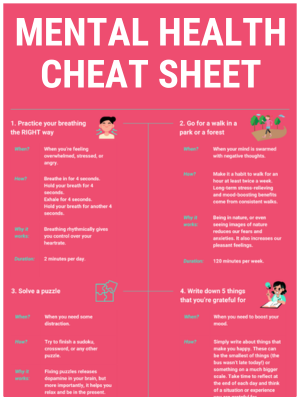None of us escape life unscathed. I didn’t realize how wounded I was until I stopped and looked inside. Perhaps you are the same. Physical wounds are sometimes easier to comprehend as we can see the issue and justify the pain or limitations to our movement.
Emotional and mental wounds are perplexing. All too often, we brush them off. But they are insidious and deep-rooted and have often influenced the neural patterns of our brain development. Yes, our emotional and mental wounds limit us as much as our physical ones.
I want to help you heal yourself mentally and emotionally. In this article, we will explore what this means and how you can do this effectively.
Contents
What does it mean to heal mentally and emotionally?
Think about it: if you break a leg, you will likely seek expert medical help. You may undergo surgery, wear a plaster cast, and endure extensive rehabilitation to ensure full use and movement of your leg again. Failure to take these steps may have your leg heal in a deformed position, hindering your movement and resulting in ongoing discomfort and pain.
Mental and emotional wounds, akin to physical injuries, leave subtle yet profound imprints on our behavior and feelings. While they might recede from immediate consciousness, their lingering effects shape our reactions and decisions.
Healing from these wounds is a journey that starts with acknowledging the pain, allowing emotions to flow, accepting the past without letting it define us, integrating the experience for personal growth, and continuously processing our emotions, potentially through therapeutic means, to ensure positive forward movement.
I’ll be honest, it’s not a simple process, I have been on my healing journey for a few years now. It requires us to embrace self-compassion and mindfulness. To do this, we must learn to be kind to ourselves.
Why it’s important to start healing
Speaking from a personal account, my healing journey has liberated me. Although I recognize I still have a long way to go.
Whatever you need help healing from, maybe it’s trauma from your childhood or a particularly difficult divorce. Either way, the enduring stress of mental and emotional wounds hurts your body.
When you embrace your healing journey, you benefit mentally and physically.
This article in the American Journal of Lifestyle Medicine lists several positive physical changes that come with emotional healing:
- Improved cardiovascular health.
- Increased longevity.
- Reduction in stress hormones
- Reduced resting heart rate.
- Boosted immune system.
💡 By the way: Do you find it hard to be happy and in control of your life? It may not be your fault. To help you feel better, we’ve condensed the information of 100’s of articles into a 10-step mental health cheat sheet to help you be more in control. 👇
5 ways to heal mentally and emotionally
If you read our articles regularly, you will know that yoga and mindfulness are important in engaging the parasympathetic nervous system and down-regulating the body. Let’s look at other ways, alongside yoga and mindfulness, that help us heal mentally and emotionally.
Here are five ways to help you heal.
1. Tune in to your mind and body
Did you know that being perpetually busy is a trauma response? I understand this; it’s something I used to do myself. Truthfully, I was afraid to slow down because the void was filled with unpleasant feelings and thoughts.
Stop running. Turn around and face the demons head-on.
This requires us to tune in to our mind and body. Listen when your body whispers so it doesn’t have to roar.
I struggle to hear my mind and body whispering at me. I press on and ignore it. I’m getting better at listening and following my energy flow. I now recognize if my body needs movement, food, or rest. But this has taken years, and I still get it wrong regularly.
Instead of focusing on all the distractions externally, take the time to direct this focus internally. How is your body feeling? Is your mind calm or agitated? What do you need to find equilibrium?
2. Love people from afar
A big part of my healing journey was learning who wanted the best for me and who was using or manipulating me.
Dr. Nicole Lepera, psychologist and revered author of several books, including How to Meet Yourself, talks about the healing journey of being a lonely one. I understand this. As I weeded my friendship flowerbed and stopped sabotaging myself to appease others, I found myself with a sparse number of people in my corner.
Like a dolphin trapped in fishing nets, I’ve endured a sense of captivity for a long time. My healing process has helped cut these nets, and I’m swimming away from those who wound me.
With family members, it can be tricky. A staggering eight percent of people in the UK are estranged from a family member. I am part of this statistic.
Sometimes, we have to love people from afar to love ourselves.
3. Educate yourself
I’m not necessarily one for labels, but learning what boxes we fit into can help us learn how to help ourselves and, more importantly, practice self-compassion.
Only in the last few years have I learned about narcissistic personality disorder. I’ve read numerous studies and books on the topic with a particular interest in the impact of being a scapegoat child to a narcissistic father.
By understanding my background, I feel valid and understood. Being able to put a name and explanation to things I experienced has been instrumental to my healing. I now understand situations from years ago that remained confusing and sticky in my emotions.
The education never stops. Read, learn, and watch how things start to slot into place and you untangle a mental ball of yarn.
4. Work with a therapist
I started my healing journey by educating myself. But I couldn’t quite break through the wall. Intellectually, I understood my many blockages, but emotionally, I struggled.
That’s when I sought the help of a therapist.
I’ve been seeing a therapist for a few years now. It’s not a simple or easy process. But it’s helped me befriend my inner child and understand the world around me. I’ve learned to recognize why I think or behave the way I do and redirect my path.
Recently, we’ve been doing EMDR, a technique that helps us process and reframe traumatic memories. Wouldn’t it be amazing to get to a place where the memories that cause us the most discomfort can come and go without affecting our well-being? That’s my goal.
Working with a therapist has turned my healing journey into a three-dimensional experience.
5. Have fun
Adults forget to have fun. We become so bogged down in the stresses of life that our frivolity and joviality is sucked out of us.
Sometimes, I see older politicians on TV, and I can’t imagine them ever being children and playing or laughing. Their bodies are rigid, and their faces so stern.
Specifically, laughter helps reduce our sensation of pain and alleviates symptoms of depression while also boosting the immune system.
So, find reasons to laugh. Learn to laugh at yourself. Laugh at life’s quirks. Watch a comedy movie or go out and watch live comedy. Be silly and play practical jokes on friends and loved ones. Have some damn fun!
💡 By the way: If you want to start feeling better and more productive, I’ve condensed the information of 100’s of our articles into a 10-step mental health cheat sheet here. 👇
This Cheat Sheet Will Help You Be Happier and More Productive
Thrive under stress and crush your goals with these 10 unique tips for your mental health.
Wrapping up
We all have our inner wounds. It’s up to you whether you allow these inner wounds from the past to darken your present and jeopardize your future. If you haven’t already embraced a healing journey, I urge you to do so for your well-being and happiness.
Remember our top five tips to help you heal mentally and emotionally.
- Tune in to your mind and body.
- Love people from afar.
- Educate yourself.
- Work with a therapist.
- Have fun.
What has helped you on your healing journey? I’d love to hear the tips that have helped you most in healing emotionally and mentally!



